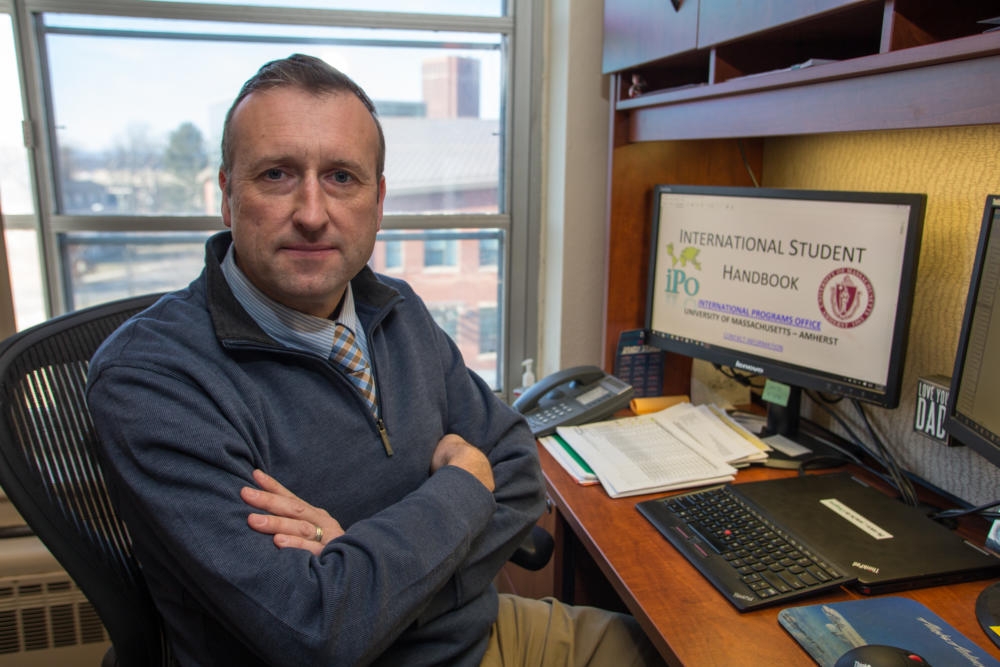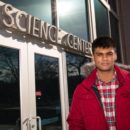With visas in hand, about 85,000 undergraduate and graduates students from overseas are pursuing their higher education degrees in schools around New England. That’s out of more than a million who come to study every year in the United States. Graduate students, in particular, are big business for colleges. But President-elect Donald Trump’s many anti-immigration stances have brought uncertainty into the classroom.
The greatest number of young men and women come from China, India, Saudi Arabia and Korea. Among the graduate students, the top areas for research are science, technology, engineering and math, known collectively as the STEM fields.
“Ultimately anyone gets into STEM because they believe, or they hope, they want to change the world,” said student Archit Rastogi, who is doing his PhD at UMass Amherst in molecular and cellular biology.
“I’m working on studying how fetal exposure to certain environmental toxicants can lead to diseases later in life,” Rastogi said.
Rastogi is from India, where he did his undergraduate work. He’s here on an F-1 visa, and part of a growing trend. The number of international students earning degrees in the STEM fields is soaring. A 2014 National Science Foundation report stated the group grew by 35 percent. At the same time, the number of U.S. citizens in the field fell 5 percent. At UMass Amherst, in some STEM fields, foreign graduate students make up almost the entire department. They are depended on for their research skills, to teach some classes and grade assignments.
Money Could Be Out Of Reach For Schools
Money is another reason foreign graduate students are in high demand at big research schools, like UMass, UConn and Brown. Their tuition is sometimes higher, and often paid in full. And importantly, the STEM knowledge they bring allows schools to apply for millions in research grants.
“Without grant money, the university can’t really function,” Rastogi said.
Universities take a certain percentage of research grants to pay for overhead. For instance, Rastogi explained, if a university gets a $1 million grant, it can take almost half to pay for electricity, equipment and salaries.
Many universities, like University of New Hampshire and Northeastern, have been actively recruiting international students for years. Some have their own own international student admissions offices and some hire outside companies. Schools may want students to come, but if you listen to the incoming president, it’s unclear if he does.
Jobs For Americans
“I want the next generation of production and innovation to happen right here, in our great homeland: America – creating wealth and jobs for American workers.” said Donald Trump, in a speech shortly after the election.
In the the first 100 days of his administration, Trump said he would direct the Department of Labor to “investigate all abuses of visa programs that undercut the American worker.”
U.S. businesses use the H-1B visa program to employ foreign workers in specialty occupations. According to U.S. Citizenship and Immigration Services, those jobs must require the “theoretical or practical application of a body of highly specialized knowledge, including but not limited to scientists, engineers, or computer programmers.” There’s a limit of 65,000 of these work visas, obtained through a lottery. Twenty-thousand are also issued to foreign students who have finished their master’s degree or higher.

After the election, school administrators like Ken Reade said he began getting calls from prospective students overseas, and hearing from those on campus. Reade directs the International Student and Scholars program at UMass Amherst. Before Trump was even a candidate, he was anticipating some changes.
“[U.S. Senator Jeff Sessions] has some very specific things that really have potential impact on international students,” Reade said, referring to a January 2015 document.
Sessions is chair of the Senate Subcommittee on Immigration and the National Interest, and Trump’s nominee for Attorney General. In a March 2016 statement, Sessions described 600,000 students who come to the United States every year who “have not been authorized by Congress to work, but the Department of Homeland Security has manipulated the rules to allow many of them to work through the much-criticized Optional Practical Training Program.”
Optional Practical Training (OPT)
OPT is a work authorization program for international students after they complete studies, expanded under President Obama. Reade said that for career and research purposes, OPT is critical.
“I think none of us have completely comprehended yet how [a potential reduction in visas] is going to impact international admissions,” Reade said.
No matter what happens, college enrollment levels won’t stay the same, Reade said, adding that with the U.S.at an all time high for international enrollment, “statistically, next year, it should be pretty noticeable.”
Extreme Vetting And National Security
Jobs are one thing, threats to national security are another. Trump’s original plan to stop all Muslims from entering the country has softened. He now calls it “extreme vetting.”
Alan Goodman directs the International Institute of Education, which conducts an annual survey of foreign students. He said international students are among the most vetted visitors to the United States — Muslim or otherwise.
“After 9/11, the U.S. instituted the requirement that there be personal interviews for every visa seeker and holder,” Goodman said. Now, he added, “We have the staff. We have the procedures and the international students coming here remain the most closely credentialed of any group of persons entering the United States.”
In the past few weeks, schools in the U.S. have been sending out acceptance letters, and in about a month, prospective students will start responding yes. Or maybe no. Since the election, some students have told colleges officials they are wary of coming to the U.S.
Student Archit Rastogi said he knows a lot of people who are at the very end of their PhDs.
“They’re really close to doing all these great, amazing, crucial things,” Rastogi said. “But they’re very worried because they have to reapply for their visas, and by that time, the [presidential] administration will have changed.”
Rastogi said he came to the U.S. to do research in state-of the-art labs not yet built in India. Rastogi has about four years left, and eventually plans to return home. He’s lucky, he said. His visa doesn’t run out until 2021.
This report comes from the New England News Collaborative. Eight public media companies coming together to tell the story of a changing region, with support from the Corporation for Public Broadcasting.
